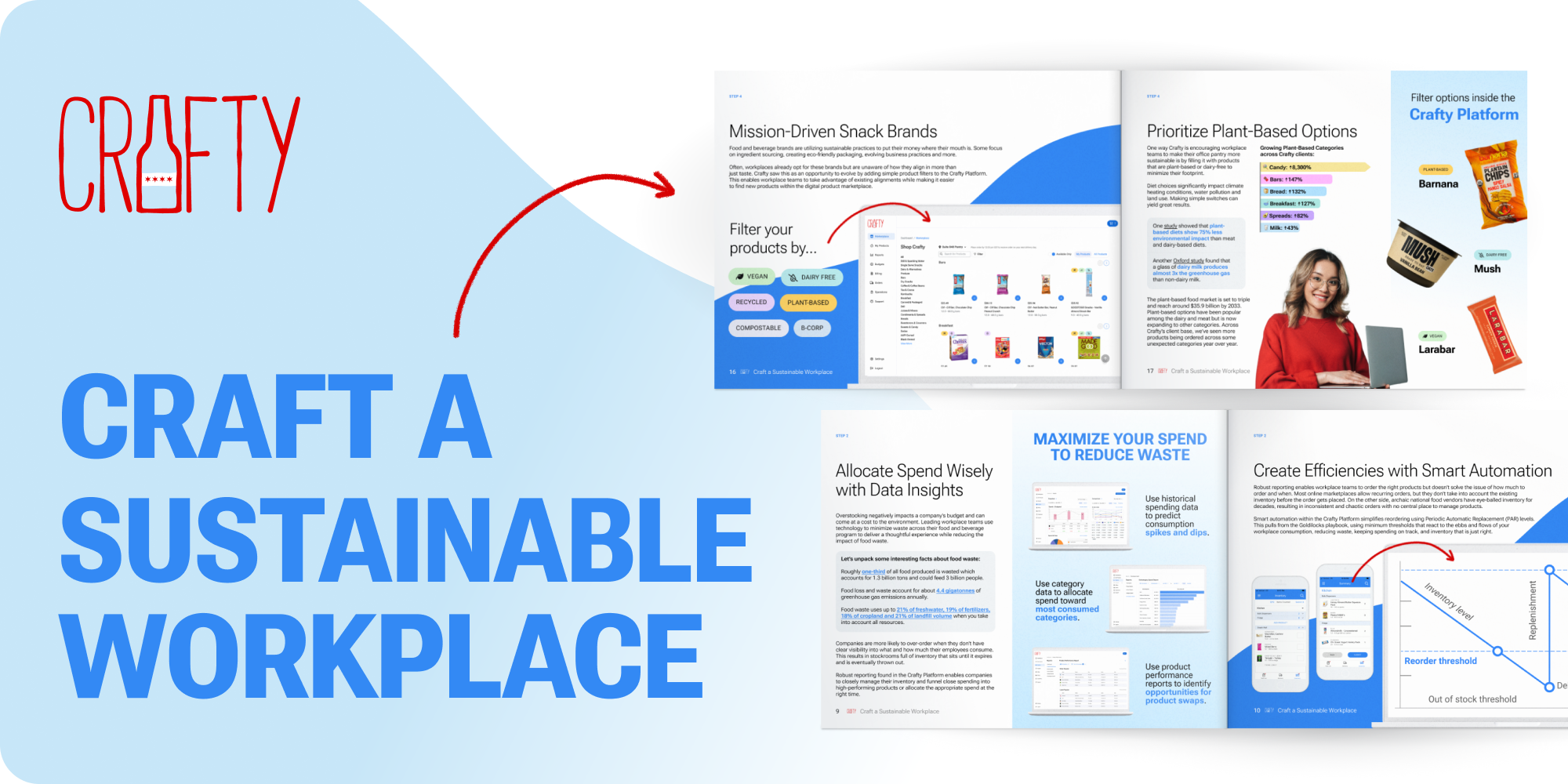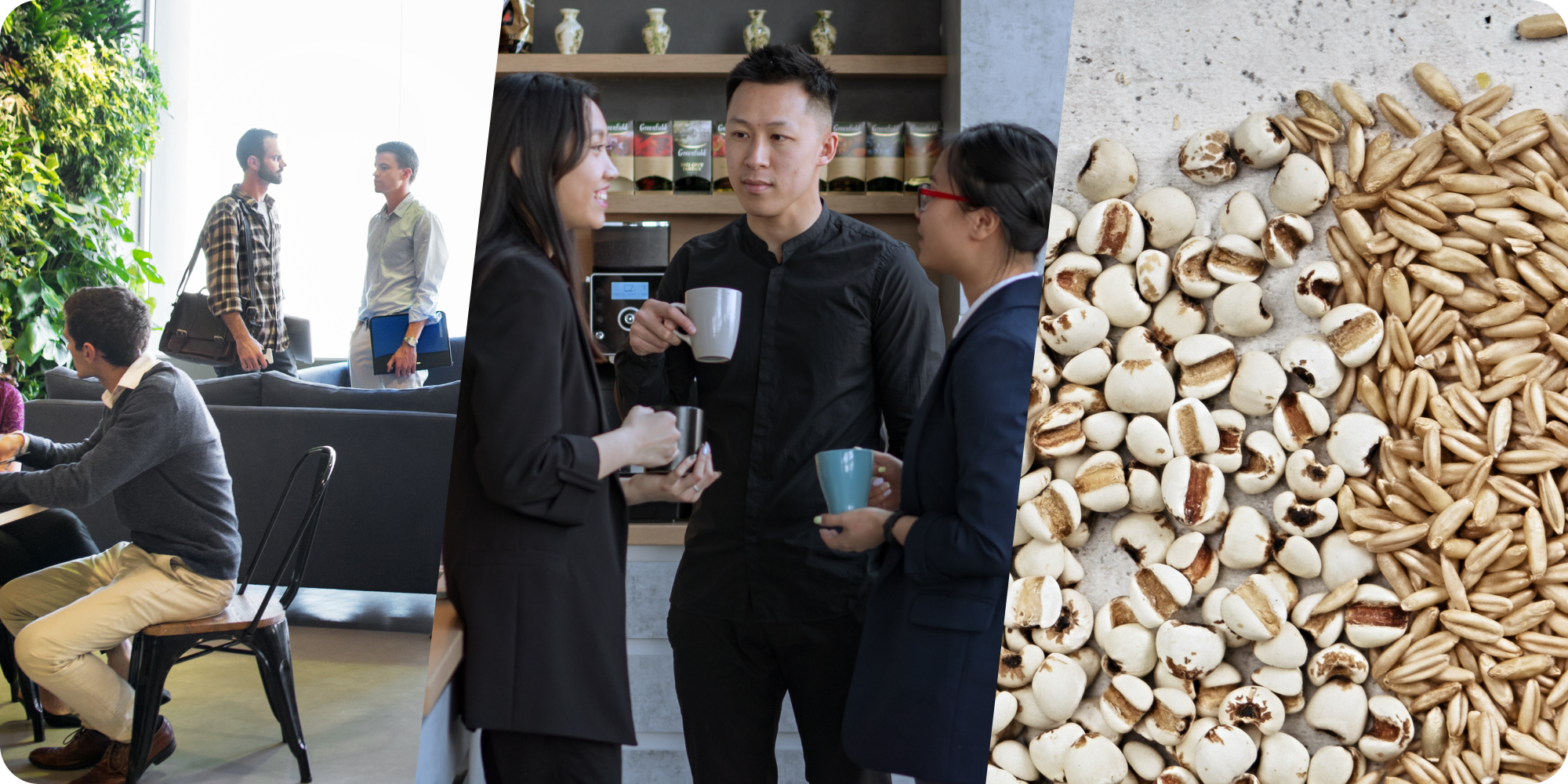August Workplace Insights and Trends Fresh Out the Pantry
Serving up the latest trends in workplace culture and office snacking.
✍️ Written by Rebecca Ross and the Crafty Team
🕚 7-Minute Read • Updated Friday, October 11

You might think that we were too busy watching the Olympics to unpack the latest trends impacting workplace culture. Who says we can only focus on one thing at a time?
While watching Team USA rake in the medals, we dove into three stories to help us learn how to create a better in-office experience. Although we're covering vastly different topics, the major takeaway from all three is how listening to your employees and your data can help evolve your office pantry program to deliver a podium-worthy performance.
Here's what we will be covering in this month's August Insights Fresh Out the Pantry:
Follow Us on TikTok: @Crafty_delivers
Food shortages are making headlines at the world's largest athletic stage.
The Olympic Village facing the same inventory challenges as workplace teams was not on our bingo card.

If you're anything like us, you were glued to your screen this July, watching the likes of Simone Biles, Katie Ledecky and Steph Curry rake in the medals. But one thing that didn't even make the podium was the food.
Fans flocked to TikTok to see the accommodations for their favorite athletes, and outside of the viral "choccy" muffins, the food reviews came up short. Everyday Health reported that the typical Olympic athlete requires between 2,000 to 10,000 calories daily. Yet, the food service lacked the essential items like eggs, chicken and carbs to make it possible. There were even reports of rationing throughout the village.
Just like most workplace teams when they face inventory issues, most athletes took matters into their own hands:
- Some athletes resorted to grilling their own food on the rooftop to avoid the disappointing dining hall selection.
- American athletes shipped their snacks to Paris, including protein shakes, pretzels, popcorn, jerky and more.
- Teams like China brought their very own chefs.
Good food creates good performance for athletes and employees. "Just about everything we eat is converted by our body into glucose, which provides the energy our brains need to stay alert," said Ron Friedman, PhD and an award-winning psychologist for the Harvard Business Journal. "When we're running low on glucose, we have a tough time staying focused, and our attention drifts. This explains why it's hard to concentrate on an empty stomach."
Food supply issues are not exclusive to the Olympics. We all deal with them, but smart organizations use technology to solve these problems quickly and efficiently. Real-time consumption and operational reports give our team a bird's-eye view of office pantries so we can proactively take action to prevent inventory issues before they happen.
.png)
Automation: Crafty’s order automation tools pull from the Goldilocks playbook, automatically ordering products when you get a minimum threshold. This way you always have the right amount in your backstock to keep up with consumption.
While your team might not be gearing up to stick a Yurchenko double pike vault, they still need an office pantry they can rely on to power their day and you need a platform that can support that.
The magic number for hybrid work is 3 days in-office.
Flex Index reported that 60% of US companies find 3 days in the office the "sweet spot."

Hybrid work is a game-changer in today's workplace. Gallup reveals that 90% of CEOs report that it slashes business costs and 53% of US companies embraced this model for the benefits that result in better well-being for their employees:
- Improved work/life balance
- More efficient use of time
- Less burnout at work
- Higher productivity
Many companies struggle to land on the number of days employees should work in the office. New research shows that hitting the office for three days and working from home for two is the winning combo for both employees and employers.
From the Flex Index:
"4 days in office you don’t really get the credit for having flexibility…and 1 day in office you don't really get the credit for full flexibility"
Co-Founder of future foHRward
Nature reported that three days in the office is a “win-win-win” in driving job retention, satisfaction, productivity and development. The Gallup report backs that up, showing an increase in overall employee engagement when employees come in three days per week, likely Tuesday, Wednesday and Thursday.
To achieve the ideal working environment, workplace teams have to strike a balance between the three Cs:
- Continuing to make room for flexible working schedules.
- Creating an office experience worth commuting for.
- Coordinating office traffic to make the most of their office investment.
You want a magnet, not a mandate approach, and office food and beverage is a great vehicle to influence workplace attendance. Employees spend anywhere from $305-$891/month on food and beverage, and providing an office pantry as an amenities can help stretch their salaries further.
Leading hybrid companies face the challenge of delivering a quality pantry within budget while also accommodating a flexible work schedule. At Crafty, technology is the backbone of crafting an efficient program that works in the hybrid world. Our team and our platform use real-time insights to ensure products are delivered in the right amounts at the right time.
Non-alcoholic beverages growing rapidly at a rate of 10% in 2024.
Mintel reports that US consumers are taking steps to protect their health and changing their beverage habits.

Pre-2020, happy hours were a key part of the office experience, and it wasn't uncommon to find an office stocked to the brim with alcohol options, including wine, beer and beyond. It was so popular that some companies like us at Crafty were born from it, brewing up engagement one keg at a time.
Four years later, are happy hours still a thing? CBS reported that workouts have replaced the happy hour, while Business Insider said that happy hours are still happening just not at the office. We know many companies are using events as part of their return-to-office strategy, but these events no longer put alcohol at the center, but rather untraditional beverages.
The beverage market saw a 39% boost in non-alcoholic beer sales in 2020, and in 2023, the same category grew a whopping 32% compared to 2022. We've also seen major investments in other types of non-alcoholic beverages, with Liquid Death securing a whopping $67 million in new funding and Crafty favorite OLIPOP tracking to hit an impressive $500 million in sales by 2024.
Why shift away from alcohol? There are a few trends Mintel outlines:
- The sober curious movement: Individuals who reduce their alcohol intake due to long-term health concerns—up nearly ten percent from 2022 to 2023.
- Consumer perception of soda: Many consumers know that soda isn't the best for you, and 61% of soda drinkers ages 35-54 are interested in more healthy options packed with vitamins and minerals.
- New wave of energy drinks targeting wellness: Products such as Celsius are beloved for their low-no sugar and calorie contents, marketing themselves as better-for-you sources of energy.
Food and beverage will always be a core part of events or the office pantry experience, but the types of options will change. That's why it's crucial to monitor those changing habits so you can better serve your employees' needs. Here's how we would do it for events:
- Center the event around an activity versus alcohol. Think game night, expert panel, watch party, etc.
- Let food and beverages support the event, and make sure to provide a wide range of options, including non-alcoholic options alongside foods and drinks for a range of dietary preferences.
- If food and beverages are going to be the center of the event, opt for something without alcohol as the main feature. For example, a coffee, smoothie, juice, or food tasting. You can always put some alcoholic options on the side.
Conclusion
Is your office pantry gold medal-worthy? Take inspiration from the GOAT (Simone) – in cultivating a winning worthy office culture.
And until next time, remember:
- Consider the Olympic Village a cautionary tale on why keeping a well-stocked office pantry is crucial to employee engagement and productivity.
- When it comes to engagement, the sweet spot is 3 days in the office to maximize collaboration while still making room for flexibility.
- It's time to rethink happy hour and ensure non-alcoholic beverages have a seat at the table.
Want to sip on more insights? Connect with our CEO Nate on LinkedIn!
🚨 NEW REPORT
CRAFT A SUSTAINABLE WORKPLACE
Explore the five practices leading workplaces use to build sustainable office pantry programs.
CRAFT
A BETTER
WORKPLACE?
Elevate your office food and beverage program with enhanced services managed in one innovative, centralized platform.

.png?width=2000&height=1870&name=36bae8a3-1a12-43f6-94ce-6e533450a9fe_2480x2320%20(1).png)


